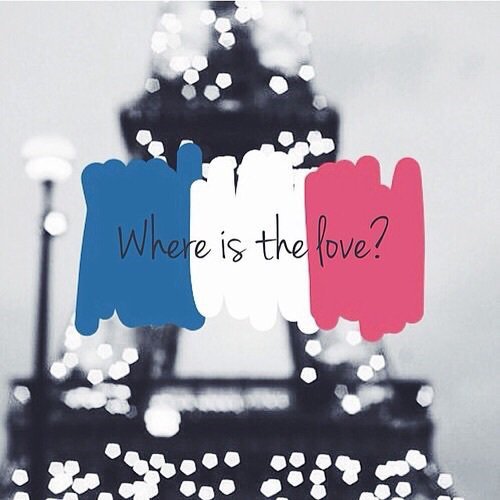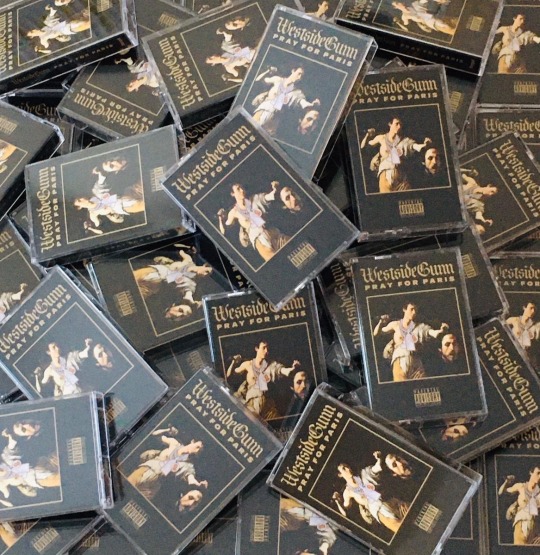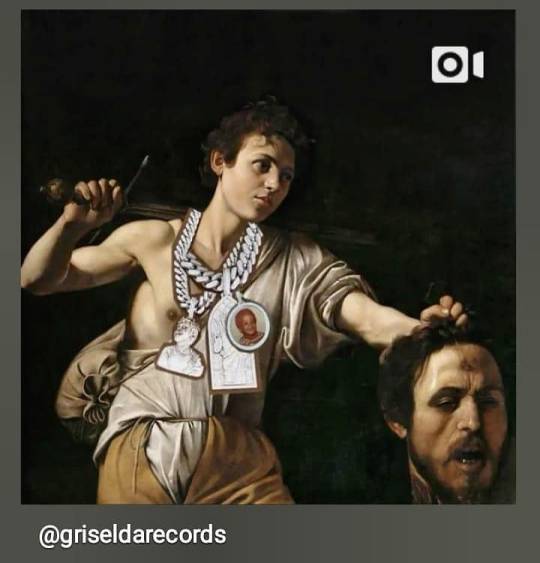#prayforparis
Text
Happy Birthday Pray for Paris
Tyler the creator Westside Gunn Joey Badass Billie Essco
8 notes
·
View notes
Text
Westside Gunn Transcends Time with Pray for Paris Sequel – And Then You Pray for Me
These releases magnificently continue to become greater and greater as this one received tremendous curation.
This latest offering tests the constructs of sound in ways nobody can wrap their head around.
Upon crafty consideration, Westside Gunn applied wizard-like touches to his latest release, “And Then You Pray For Me.” For those of you who enjoyed “Pray for Paris” you will most definitely find the sequel interesting.
Recently WSG went on Math Hoffa where he humorously made it seem like he holds the formula close to his chest. This artist exists as such an anomaly that his presence could…

View On WordPress
0 notes
Audio
~Song of the Week~
When the beating of your heart
Echoes the beating of the drums
There is a life about to start
When tomorrow comes~ 💙
For prayers to work, you need to do more than speak, you need to take action. Go beyond the statuses and profile pictures. Take up your sword. Strap on your faith. Take it to the streets. Be the change you want to see in this world. For your community. For Paris. For the world.
Retrospective Note 2022: For context, this was in response to the 2015 bombing in Paris, France. There were many a Facebook post and profile picture change standing in solidarity with those suffering in Paris, but I could tell these attempts at sympathy were hollow. They think a prayer will wash away the pain in this world, but it takes more than that. God literally put us here on this Earth to serve, and not to sit back on our phones and type empty phrases of love and care while the rest of the world, hell even while the rest of their OWN communities, suffer. We could be that very answer to our own prayers, but we're too passive to even consider that we should take action of our own. Now obviously it's not a BAD thing to be posting words of solidarity and what not, but it's about the heart of it that matters. Are you just saying it to make YOU look good as you go back to being a hypocrite, or are you saying it, and then making a difference through your ACTIONS? Prayer should lead us to what we need to do or say. I'd be redundant if I repeated what I wrote above this retrospective note, so I'll just say that now's a good time to read that part again.
1 note
·
View note
Text
RDC/Justice : La demande de mise en liberté provisoire de 2 officiers de l'armée accusé d'avoir occasionné la chute de Bunagana rejetée .
RDC/Justice : La demande de mise en liberté provisoire de 2 officiers de l’armée accusé d’avoir occasionné la chute de Bunagana rejetée .
RDC/Justice : La demande de mise en liberté provisoire de 2 officiers de l’armée accusé d’avoir occasionné la chute de Bunagana rejetée .

View On WordPress
#follow#followers#followforfollowback#india indian indianwedding incredibleindia indianphotography photographers_of_india indianfood tiktokindia indiapictures indianfas#nairobi iamnairobian nairobikenya ignairobi igersnairobi nairobifashion nairobian nairobifashionmarket thriftsocialnairobi nairobi#nigeria nigerianwedding lagosnigeria madeinnigeria nigerian nigerianfashion nigerianweddings nigerianfood nigerians nigeriawedding#paris disneylandparis parisjetaime igersparis parisienne prayforparis parisfashionweek parisian sipariş parisianstyle parismonam
0 notes
Text
Une pensée qui devient une flamme !

Pourquoi tant de haine en ce bas monde ?
Pourquoi devons nous subir et mourir pour des lâches ?
Pourquoi tuer des innocens, des personnes qui ne demandent rien à personnes ?
Pourquoi nous autres Femmes, Hommes et Enfants devons nous mourir pour rien ?
Tant de questions qui reste encore sans réponses et qui continuent à faire pleurer des personnes,
Des familles qui perdent un peu plus chaque jours une personne de leur entourage...
Des personnes qui trépassent sous le poids d'une haine contre l'humanité tout entière..
Mais pourquoi vouloir faire autant de mal pour au final que ces personnes se fasse tuer ou meure de leur propre chef ?
Pourquoi, Pourquoi, POURQUOI ?
Je vous le demande pourquoi vouloir faire plus de mal encore et encore à des familles, des personnes qui profitent de leurs libertés,
De leurs vie car nous en avons qu'une seule et vous la supprimé en une détonation, une folie en camion ...
Vous touchez un pays tout entier, une peuple FRANÇAIS soudé plus que jamais face à vous des monstres sanguinaires !!!
Alors je donne tout mon soutien à toute les familles de Français qui ont subis vos attaques un peu partout en France, comme en Belgique, et un peu PARTOUT dans le MONDE.
NOTRE MONDE !
Un soutien à toute ces personnes qui ont perdu des être cher qui sont aujourd'hui des étoiles qui veillent un peu plus chaque jours sur nous et essai de nous protéger de vous autres !
Aujourd'hui Nous, Je suis à nouveau en deuil la FRANCE toute entière est en deuil face à cette nouvelle tuerie...
Levons des bougies pour montrer à quel point nous sommes fort et uni face à cette menace !!!
#PrayforParis, #Prayfor Nice, #Prayforthe WORLD ♥ ♥ ♥

1 note
·
View note
Text

7 years ago Lily via Instagram (November 14, 2015)
“ prayforparis all my thoughts and love for the people of Paris at this horrifying time xxx”
0 notes
Text
The Hashtag Generation: From Digital to Social Natives

Hashtags are words or phrases preceded by the pound sign (#) that function as keywords to allow social media users to engage in online discussions. Think of hashtags as “categories” of online threads that social media users follow to communicate with people they do not necessarily know. All they need to do is to follow or sometimes create the relevant hashtag and join a global discussion that the hashtag word or phrase signifies. For example, if you want to know what Twitter users talk about Black Friday, you can search online to find the relevant hashtag #blackfriday and read what people write about last-minute deals or happenings. How did it all start?
The birth of the hashtag generation began from Twitter and has gone viral to all social networking sites. In 2007, the web developer Chris Messina suggested, in a tweet, that users should be grouping their topics using a keyword followed by the pound sign (#) to allow other users to follow particular conversations even if they were not connected. Although Twitter did not seem to favor Messina’s idea, in October 2007, San Diego citizens started sharing information about the forest fires in the area. Messina suggested using the hashtag #SanDiegoFire every time they were tweeting news about the forest fires. That was it. The hashtag #SanDiegoFire became the first trend on Twitter as people managed to coordinate their efforts and let everyone know about the critical situation. Since then, social media users include hashtags in various topics and discussions, from critical sociopolitical events (#PrayForParis or #MeToo) to fun topics (#love or #instafood). The hashtag is not the only way young people use to communicate.
The early adopters of social media also communicate through posts, shares, likes, tweets, thumbs-up and thumbs-down, images, short videos, Vines, and many other ways that will be introduced in the future. Hashtag generation sees education differently. Young people learn best when training is given more entertainingly and randomly. Prensky (2001) argues that the new generation prefers reading websites and hyperlinks than pages and books. They have a sense of anxiety and impatience to understand many different and somehow interconnected topics. Young people prefer hands-on projects, multitasking learning by watching videos, completing online tasks, and applying theory to their everyday life. The digital natives, whether in education or at work, are shaping the new social reality. They are members of the hashtag generation. They tend to form new social groups based on their similar interests and not based on classmates, neighbors, or family friends. For the hashtag generation, what matters is your impact and influence on social media, regardless of who you are. Many members of the hashtag generation are entering the business world, and it is worth keeping an eye on them.
This article furthers our understanding of the new generation of digital natives and social media enthusiasts entering the business world uniquely. These young people are college graduates and, at the same time, famous YouTubers, online personas, style bloggers, community influencers, and niche celebrities with million followers. They adore social media and especially Facebook, Twitter, Instagram, and Snapchat. They love sharing pictures of themselves and their interests with their followers. Some of them want to become professional YouTubers by posting cover music videos, prank videos, car accidents on dashboard cameras (dashcams), or even videos of their unintentional accidents (fail videos). Everything for a thumbs-up! How do digital natives think? Why do they want so eagerly to become famous? What will they gain? What do they prefer when it comes to social media use and job searching?
Who are the Digital Natives?
It was in 2011 when the young advertiser Alec Brownstein introduced us to the Google Job Experiment. Back then, no one believed that this experiment would signify the beginning of a new era in job searching. Brownstein used Google AdWords to buy five keywords for only $6. He purchased the names of five famous creative advertising directors and used them as keywords in his campaign. Brownstein correctly assumed that at some point, these people would type their names on Google, as many of us usually do. Once any of the five creative directors was googling his name, the following message appeared as a paid advertisement “Googling yourself is a lot of fun. Hiring me is fun, too.” The advertisement’s link directed visitors to Brownstein’s website, which allowed him to demonstrate his talent in copywriting. He got four interview calls, two job offers, and now Brownstein is working for one of the biggest advertising firms in New York.
Alec Brownstein’s job searching experiment is one of those stories of young people who thought out of the box and used the new technologies as digital natives do. The term “digital natives” was first introduced by Prensky (2001) when he observed the new generation of freshmen college students. Prensky described them as a new generation of students with fundamental differences from any other generations he had ever encountered in his academic career. Digital natives had “spent their entire lives surrounded by and using computers, video games, digital music players, video cams, cell phones, and all the other toys and tools of the digital age.” (Prensky, 2001, p. 1). Digital natives were born later than in 1980 and raised in a technology-oriented environment. They cannot recall childhood memories without using some technology. This generation demonstrates remarkable adjustment skills to any new gadget and innovation that hits the market.
The early digital natives had firsthand experience with the personal computer boom and the rapid development of video game consoles from Spectrum, Amstrad, and Amiga to the fancy Playstation and Xbox series. They got fascinated by the World Wide Web and its potential, such as sending e-mails, chatting online, placing video calls, using mobile devices, and communicating via social networking sites. The digital natives who were born in the early 1980s have grown up experimenting a lot with technology. Some of them became entrepreneurs taking advantage of the countless opportunities the Internet provides. They explored the possibilities of online communication and saw great opportunities for entertainment, information, education, and personal engagement with technology. Facebook’s founder Mark Zuckerberg or Google’s founders Larry Page and Sergey Brin became multibillionaires at a very young age due to their innovative ideas that shaped today’s online environment. Nowadays, college students or just self-taught programmers dream of coming up with the next best idea that will do what Steve Jobs and Bill Gates started almost three decades ago.
Digital natives demonstrate a natural inclination toward technology and electronic devices. The generation gap, seen as an intrinsic factor in labor history, is advanced as the current generation of online users who demonstrate high adaptability to anything new. This behavior is in stark contrast to their parents and grandparents, classified within the genre of social media as digital immigrants who are experienced online users who, although they manage to catch up with technology quickly, are still not considered full-fledged “members” of the hashtag generation. Digital natives are especially adept at functioning within an online environment, whether this is a web-based or a mobile interface. When it comes to a business setting, digital natives are especially predisposed to this sociological profile. Configured by e-mail and instant messaging communications, collaborative project management (wikis), and virtual meetings through Skype or WhatsApp, digital natives, find validation in their professional standing by way of multiple digital accounts. Digital natives are first-generation bloggers, vloggers, wiki contributors, online gaming community (clan) leaders, and top influencers on social networking sites. Many of those same digital natives might also have an avatar (digital self) that lives in virtual worlds and online games like Lineage and World of Warcraft (Qualman, 2009).
Digital natives are equally eager to test any new gadget as soon as it hits the market. The iPhone, the Samsung Galaxy, and other smartphones or wearable devices are evidence of this movement. Nowadays, digital natives listen to music through streaming platforms such as Spotify and Deezer. They most probably own not more than a few songs, as they claim that “everything is on YouTube and Spotify.” Digital natives get informed via social media and the accounts they follow. They like reading titles than full articles. The transition to the professional world is coming naturally to digital natives from their youth aim at what Tapscott and Williams (2008) call organic connectivity. This means that this generation of college graduates is more open to set up professional networks and establish connections than their parents. In fact, digital natives have been connecting with people based on similar interests from the beginning of their interaction with technology.
The first digital natives have grown up, completed their college, and are entering the business world. With such openness and diversity in business models (i.e., Microsoft Office 365, Google Docs, Skype for Business, GoToMeeting, VoiceThread, etc.), digital natives can run web-based start-ups before their graduation. The digital world offers countless opportunities for young entrepreneurs to make a living from home by using online resources such as blogs, vlogs, content sites, SEO consultancy, web design, and graphic design. Also, the new digital professional landscape offers a variety of new types of remote jobs via websites such as Flexjobs, We Work Remotely, Skip the Drive, Landing Jobs, and AngelList.
The Birth of Social Natives
With the rapid proliferation of social media in everyday life and business, the next generation of digital natives has turned to become social natives. In 2014, Marc Foulger posted to Hootsuite’s blog an article titled “Meet the First Generation of Social Natives” to introduce the term. Social media is like home to social natives. They spend all day checking their social accounts, looking for hashtag trends, and sharing content nonstop. Social natives enthusiastically adopt new platforms faster than older generations, such as millennials and Gen Xer’s. Snapchat is an example of a social media application; Gen Xer’s rejected it, but social natives loved it. Social natives are much more than trendsetters. They think, consume, discuss, and collaborate differently.
Elon University professor Janna Anderson argues that people born after 2000 tend to be always online as they “have grown up in a world that has come to offer them instant access to nearly the entirety of human knowledge, and incredible opportunities to connect, create and collaborate” (Foulger, 2014). Social natives do not seem to adopt the old digital habits of the previous digital generations. Although e-mail remains a primary business communication tool, social natives will mostly rely on messaging apps such as WhatsApp or Facebook Messenger to call their friends and colleagues. Even Skype seems old-fashioned to them. New-generation social media users prefer sending direct messages (they call them DM) to other people’s inboxes rather than e-mailing them. Many of the social natives do not need to get someone’s phone number anymore. All they need is the person’s account on Snapchat, and they will stay connected.
Social natives comfortably shift among various online platforms and mobile applications. They do not merely rely on a single network as the “always-on” concept matters the most to them. These young people have also developed a new business mindset that everyone can be a celebrity and quickly succeed in their careers. Some of the pioneers of such a business mindset are Facebook’s founder Mark Zuckerberg and Google’s founders Larry Page and Sergey Brin, showing that billionaire status can be attained at a very early stage next-generation careers. These technology innovators conceived a great idea, managed it well to dominate a specific online category, and then brought it to fruition as initial public offerings at the right time. The social natives’ business mindset developed one more major change. Social natives realized that they do not have to be technology geniuses to become rich and famous. Social media opened tremendous opportunities for every user to go online and share his/her passion with the world. If people like what they see, they will see it again and again. They will also share it with their friends. That is how someone’s passion for fashion, music, movies, and much more becomes viral.
Social natives demonstrate a unique understanding of technology since they were children. This rare knowledge has significantly impacted cultural forms and product segmentation, as this generation seems to appreciate diversity and change in both education and business (Zur and Zur, 2011). For example, similar to digital natives, social natives have a different meaning of lifelong learning. To them, education is a collaborative process that all they have to do is to search on Google and YouTube for the most relevant results to find their answers. Experience-driven and multitasking-savvy, the new hashtag generation of employees and entrepreneurs, are horizontal in efficacy and practice. Will they look for a job, or will they first try to create their professional opportunities? The question that arises is to what extent the current business world is open enough to accept and fulfill the hashtag generation’s expectations.
Note:
The above is an excerpt from a book I authored in 2019, “Tell me about yourself: Personal branding and social media recruiting in the brave new online world,” published by Business Expert Press.
References
Foulger, M. (2014), “Meet the First Generation of Social Natives.” Hootsuite Blog. Retrieved June 13, 2020. https://blog.hootsuite.com/social-natives
Prensky, M. (2001), “Digital Natives, Digital Immigrants.” On the Horizon 9, no. 5, pp. 1–6.
Qualman, E. (2009), Socialomics: How Social Media Transforms the Way We Live and Do Business. Hoboken, NJ: Wiley and Sons.
Tapscott, D., and A. Williams. (2008), Wikinomics: How Mass Collaboration Changes Everything. London, UK: Portfolio.
0 notes
Text

Personal collection
13 notes
·
View notes
Text

Pray For Paris
15 notes
·
View notes
Text

p4p
#style#my upload#mood#aesthetic#music#aestheitcs#musicians#hip hop#westside gunn#griselda#prayforparis#tumblr#photography#album covers
3 notes
·
View notes
Text


Westside Gunn - Pray For Paris on vinyl
Still sealed
4 notes
·
View notes
Video
youtube
Westside Gunn X YNX 716 X Cartier Williams LE Djoliba Remix
@westsidegunn album Pray For Paris has been a massive success and voted by music observers as one of the best albums to drop in 2020. Everybody check out the LE Djoliba remix with @westsidegunn @ynx716 @cartierawilliams Do yourself a favor go cop Westside Gunn's album Pray For Paris right now at https://empire.ffm.to/prayforparis
Follow Westside Gunn on social media platforms
Twitter: https://twitter.com/WESTSIDEGUNN
Instagram: https://www.instagram.com/westsidegunn
Follow YNX 716 on social media platforms
Bandcamp: https://ynx716.bandcamp.com
Facebook: https://www.facebook.com/YNX716
Twitter: https://twitter.com/ynx716
Instagram: https://www.instagram.com/ynx716
YouTube: https://www.youtube.com/channel/UCGD0SgZl8E4TxDVTBEPSbBw
Follow Cartier Williams on social media platforms
Facebook: https://www.facebook.com/spock21
Instagram: https://www.instagram.com/cartierawilliams
Follow Hip Hop Til Infinity on social media platforms
Instagram at https://www.instagram.com/hiphopheadzworld
Twitter at https://twitter.com/hiphoptilinfin
Facebook at https://www.facebook.com/groups/493803761289907
Tumblr at https://hiphoptilinfin.tumblr.com
YouTube at https://www.youtube.com/channel/UChnmxAPlcTgh1Hp5EhKvoAA
TikTok at https://www.tiktok.com/@hiphoptilinfinity
#westsidegunn #ynx716 #prayforparis #griseldarecords #cartierwilliams #buffalo #hiphop #hiphoptilinfinity #nodfaktor #buffalonystateofmind #boombap #goldenera #fortheculture #keepgrindin #keepshinin
#westsidegunn#ynx716#prayforparis#griseldarecords#cartierwilliams#buffalo#hiphop#hiphoptilinfinity#nodfaktor#buffalonystateofmind#boombap#goldenera#fortheculture#keepgrindin#keepshinin
2 notes
·
View notes
Text
Le président Jean-Marc Kabund a reçu ce matin, un appel téléphonique du président américain joe Biden. Cet échange téléphonique a pris plus de 45 minutes, depuis sa cellule du prison centrale de Makala.
Entre autres héritages que Kabund rapporte à Kingabwa c’est le Kadiosha : en voici ci-dessous la première signature tirée des réseaux kabundiste
Seulement Kabund n’a pas emporté dans sa gibecière les injures. Il a laissé l’héritage injures à ceux de Limete-résidentiel.
Voici le fameux Kadiosha
Le président Jean-Marc Kabund a reçu ce matin, un appel téléphonique du président américain joe…

View On WordPress
#africa southafrica african africanfashion africanprint africanamerican africanart asoebiafrica africanbeauty africanstyle southaf#france igersfrance bulldogfrances madeinfrance southoffrance ig_france parisfrance hello_france super_france gayfrance france_foc#ghana ghanabraids ghanawedding ghanaian idoghana accraghana ghanaweddings ghanagirls ghanafashion madeinghana weloveghanaweddings#india indian indianwedding incredibleindia indianphotography photographers_of_india indianfood tiktokindia indiapictures indianfas#kenya igkenya igerskenya nairobikenya tembeakenya madeinkenya vscokenya fashionkenya kenyan magicalkenya dietkenyang kenyanmemes#nairobi iamnairobian nairobikenya ignairobi igersnairobi nairobifashion nairobian nairobifashionmarket thriftsocialnairobi nairobi#nigeria nigerianwedding lagosnigeria madeinnigeria nigerian nigerianfashion nigerianweddings nigerianfood nigerians nigeriawedding#paris disneylandparis parisjetaime igersparis parisienne prayforparis parisfashionweek parisian sipariş parisianstyle parismonam#psg jastipsg teampsg relationshipsgoals blogshopsg tipsgemuk bullytroopsgang makeupsg tipsguidelisboa fpsgames jasatitipsg lpsgr#rwanda visitrwanda rwandan kigalirwanda rwandanbeauty madeinrwanda rwandaupdates rwandaful remarkablerwanda rwandaupdatesofficial#uganda ugandanknuckles ugandaknuckles ugandan visituganda madeinuganda ugandafashion ugandanwarrior ugandabekiddingme ouganda thi
0 notes
Photo

Eloquently done - #prayforparis @westsidegunn https://www.instagram.com/p/B_UxGTMFwxp/?igshid=19mll7fqqucbb
2 notes
·
View notes
Text
Album review: ‘Pray for Paris’
Today’s album review is going to be on Westside Gunn’s ‘Pray for Paris’. I stumbled upon this album scrolling through my twitter feed and seen Tyler the creator posted a picture of this album. The first song I listened to was ‘327’ ft. Joey badass, Tyler the creator and Billie essco. As soon as I pressed play I was amazed!! I am someone who values lyricism heavily and I must say this song alone delivered. On the album level. I must admit my socks have been knocked off. Everything about the creative direction of the album is astonishing!! The album artwork creates curiosity and eye movement throughout the entire piece as if it were a physical painting. To top this effect off the first song on the album is titled “400 million plus tax” assuming this is referencing the last divinchi being auctioned off for 400 million the song creates an effect as if I was witnessing history in the flesh. Most importantly on the originality scale from zero to ten, zero being non original and ten something never heard before. I would fully without a doubt give this a album a TEN!! The beat in each individual song carries its own personality. By this I mean it doesn’t sound like I’m hearing the same song over and over again just with different lyrics. West Gunn and all features on this album do a phenomenal job of delivering their verses with unique cadence and rhythm!! The ad libs in the album surprised me because it wasn’t your normal “aye,” “uh,” “yea,” that we have heard from just about every rapper in the industry. Also the production on ‘Pray for Paris’ definitely does not go un noticed!! I loved every second of this album and can listen to this album just about every where. I highly recommend y’all check this album out!! You won’t be disappointed!!
#prayforparis#PrayforParis#music#reviews#new albums#westgunn#joeybada$$#tylerthecreator#hiphop#newmusic#art#writers of tumblr#creative#poetry#wale#rap#goodmusic#griseldarecords#my art
2 notes
·
View notes